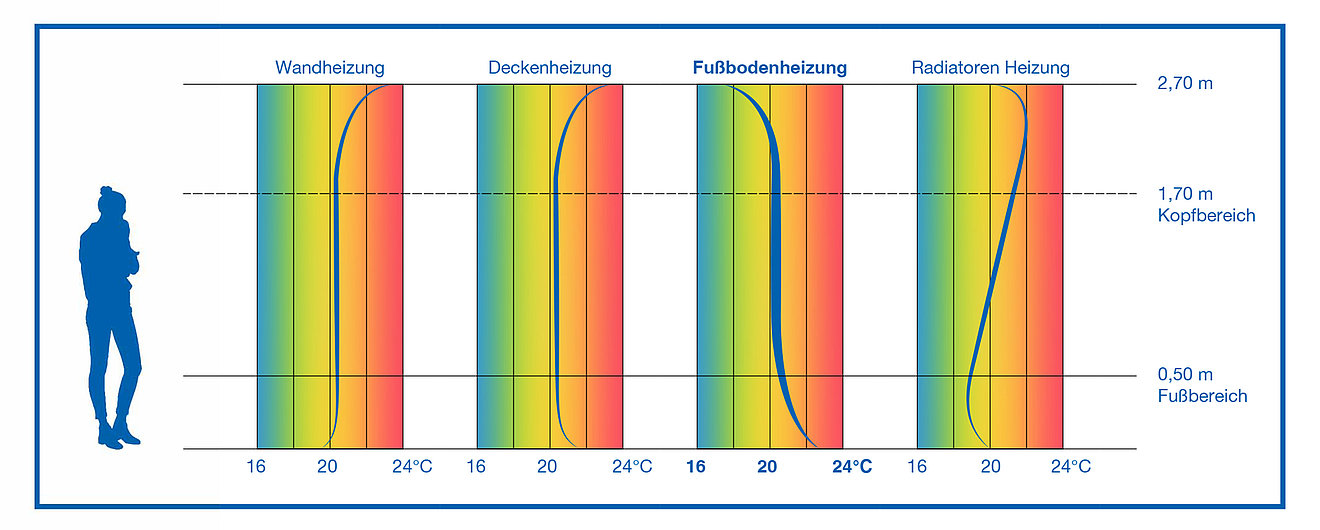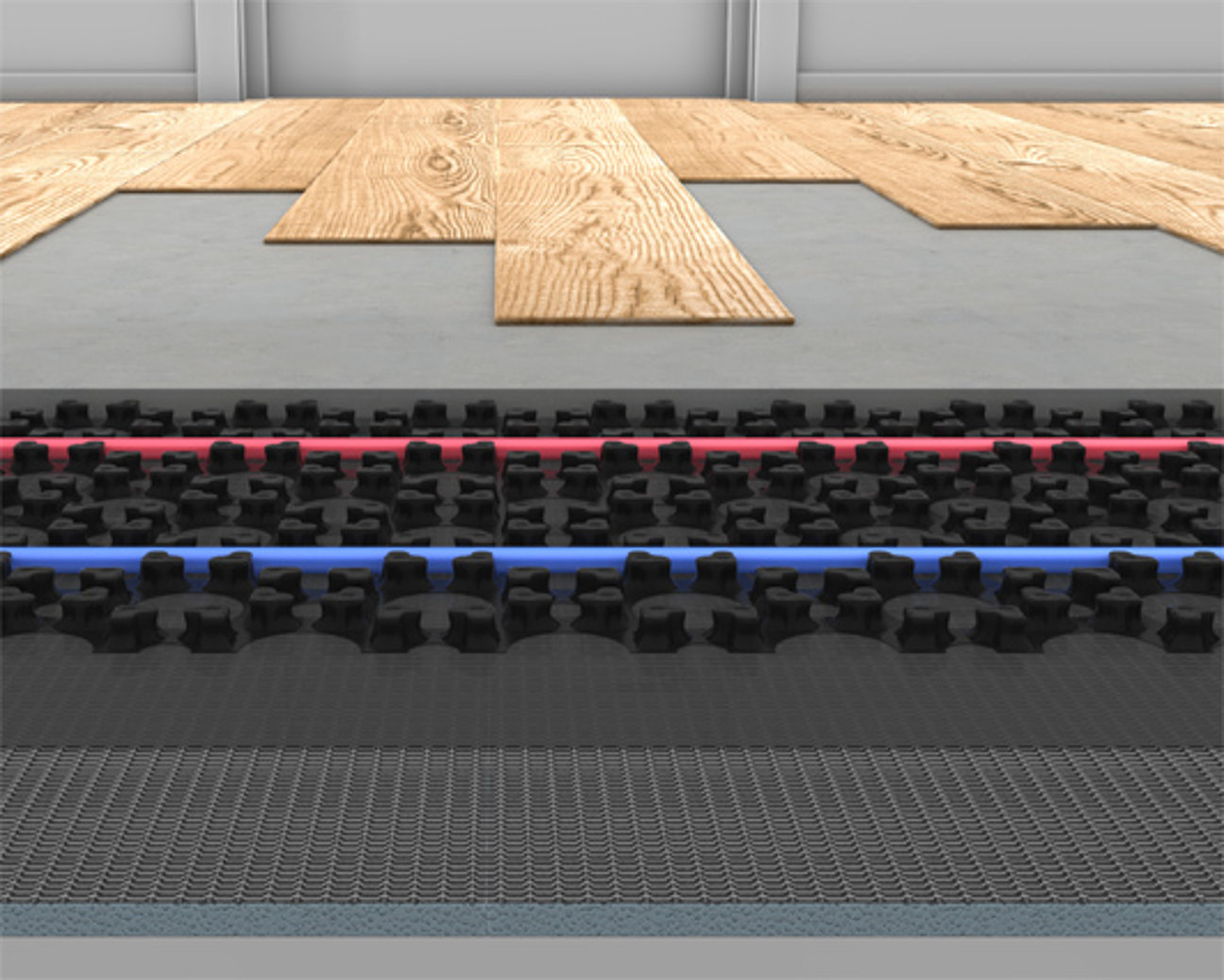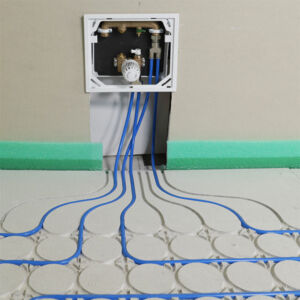Retrofitting the Thermal Comfort of Underfloor Heating in Older Buildings
Using the benefits of thin-bed heating for refurbishment
FLEXIRO thin layer underfloor heating provides the thermal comfort of panel heating even in older buildings. Unlike conventional radiators, heat is transferred over a large area and in a radiant manner. Air and dust turbulence is reduced. This improves the indoor climate and promotes general wellbeing. This is another reason why underfloor heating is now the standard in residential construction.
Reasons enough to consider a retrofit solution when renovating old buildings. Our system kit makes it possible to enjoy the benefits of underfloor heating even in old buildings. The low installation height of at least 17 mm allows retrofitting in bathrooms and other rooms where special heating comfort is required.
Benefit Warmth and a cosy atmosphere
With FLEXIRO underfloor heating, heat is distributed evenly over a large area through the narrow loops of the flexible 10mm PE-RT pipe. As a result, our low profile heating system can operate at low flow temperatures and provide an amazing level of thermal comfort. Due to the high level of radiation, which is also reflected from the walls and ceilings, the underfloor heating creates a temperature feeling at a room temperature of just 20°C, which is only achieved by conventional radiators at 22°C.
In addition, the lower flow temperature ensures efficient energy use and comparatively low heating costs. The following diagram shows the temperature curves of different types of heating compared to the climate zones of the human body. No conventional heating system comes as close to the ideal as underfloor heating. The result is an even temperature pattern that provides a comfortable feeling of warmth.
Heat distribution of underfloor heating in relation to room height

Walking barefoot on a warm floor is a real treat, especially in the bathroom. You will appreciate it.
Benefit Health
Because of the comparatively low surface temperatures, there is little air turbulence. This means there are fewer allergens circulating in the air. It's no wonder that house dust allergy sufferers in particular opt for underfloor heating wherever possible. In addition, mould growth is actively prevented because the even heating of large surfaces reduces cold bridges at corners or window soffits and temperature differences in the room. FLEXIRO underfloor heating also creates a comfortable, homogeneous and healthy indoor climate in old buildings.
Benefit Design freedom
Another advantage of underfloor heating is its invisibility. There are no bulky radiators to restrict the design and furnishing options. Underfloor heating systems control the room temperature unobtrusively and evenly. The result: plenty of floor space and even more opportunities to design your space. Even when it comes to the choice of flooring, there are no limits to the design possibilities. Natural stone, parquet, laminate, tiles or carpet. Everything is possible.
Benefit Economic efficiency
Thin-layer underfloor heating is not only modern and healthy, but also significantly reduces heating costs in older buildings thanks to the low flow temperature. It is also compatible with all energy sources and is particularly suitable for use with renewable energy sources such as solar or geothermal.
Underfloor heating systems

Does low profile underfloor heating require thermal insulation?
- In which cases is thermal insulation required
- Why low profile underfloor heating usually does not require insulation
- Which insulation boards we recommend
We provide answers to the most important questions about insulating a low profile heating system.


